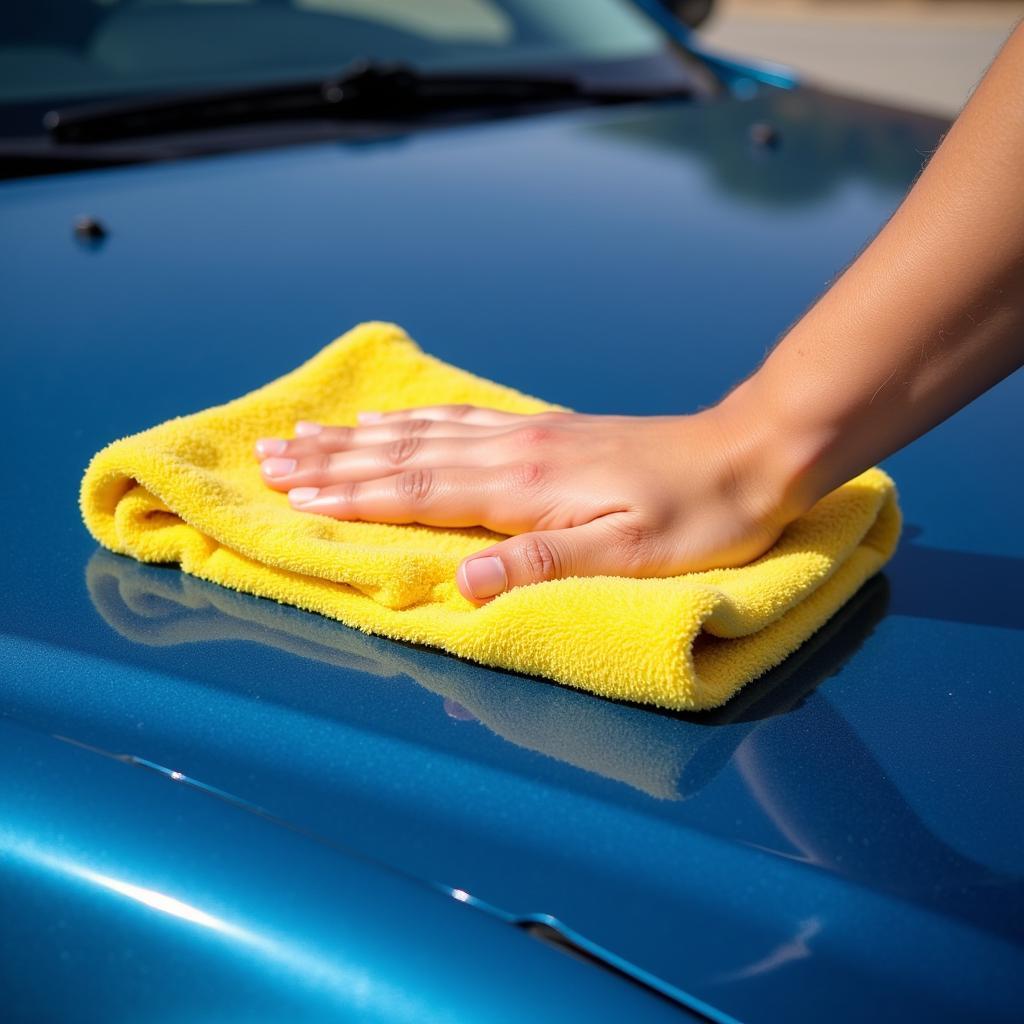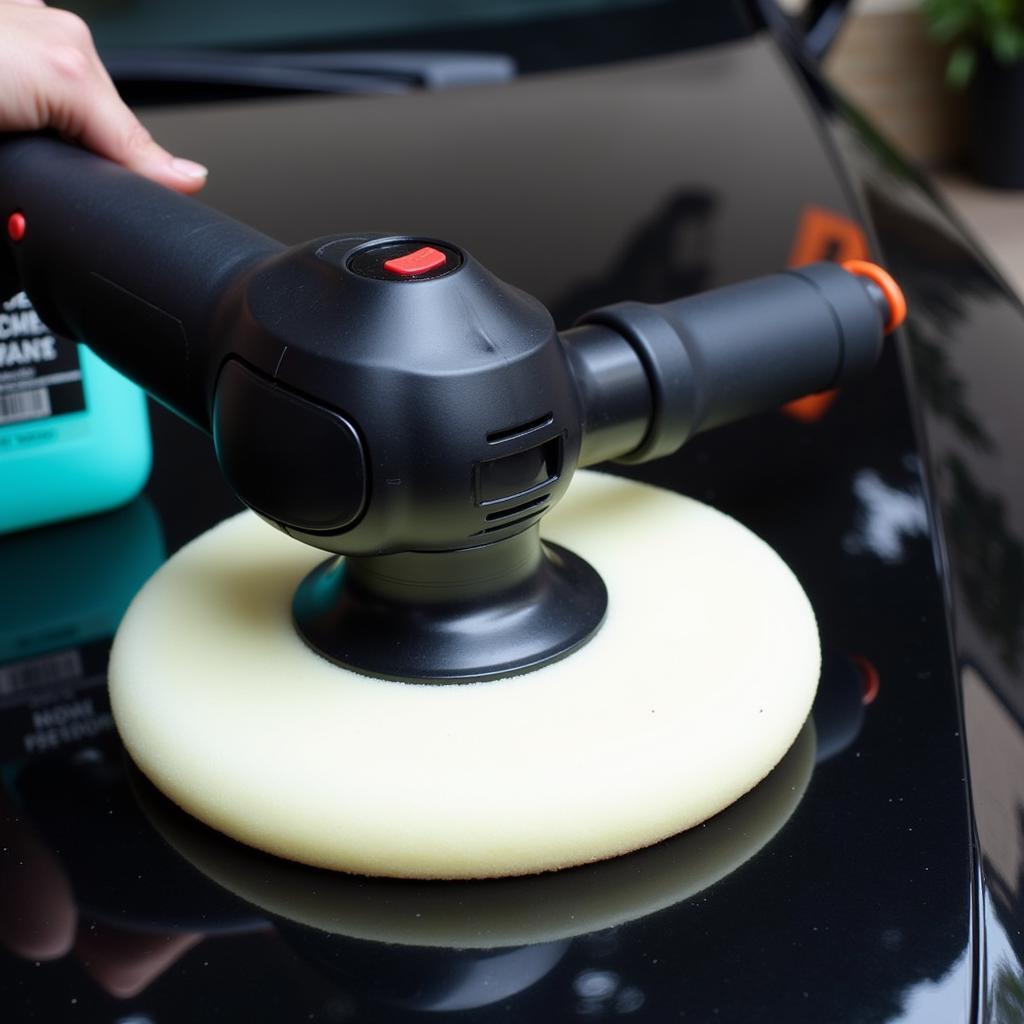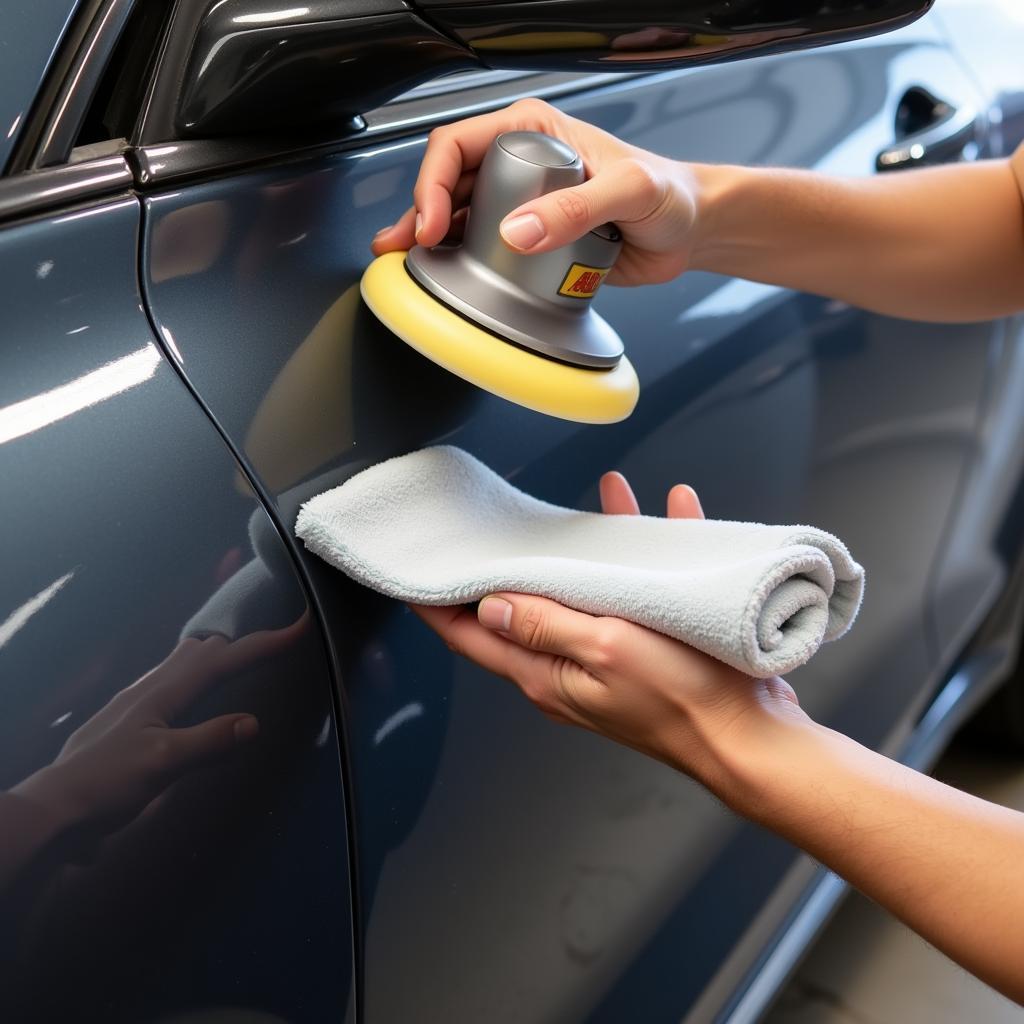When detailing a car, choosing the right tools can make all the difference between a stunning finish and a lackluster result. One common debate among detailers and car enthusiasts is whether microfiber towels or foam pads cut better when it comes to polishing and removing imperfections. This article will delve deep into this debate, exploring the pros and cons of each, and helping you make the best choice for your car detailing needs.
Microfiber Towels: The Soft Touch with Cutting Power
Microfiber towels are a staple in any detailing arsenal. These woven wonders are known for their softness and absorbency, making them ideal for drying and buffing. But can they cut, too? The answer is a nuanced yes. High-quality microfiber towels with a tighter weave and shorter fibers can provide a surprising amount of cutting power, especially when paired with a suitable compound or polish. They are particularly effective at removing light swirls, water spots, and dust.
The advantage of microfiber is its versatility. One towel can be used for multiple stages of the detailing process, from applying product to buffing it off. This efficiency can be a real time-saver. However, it’s important to choose the right microfiber towel for the job. Lower quality, loosely woven microfiber can leave behind lint and even scratch delicate paint surfaces.
 Microfiber Towel Polishing Car
Microfiber Towel Polishing Car
Foam Pads: The Workhorses of Paint Correction
Foam pads, on the other hand, are specifically designed for paint correction. Their cellular structure allows them to hold and distribute polishing compounds evenly, providing consistent cutting action across the surface. Foam pads come in various densities, from soft polishing pads for finishing to aggressive cutting pads for removing deep scratches and defects. This range of options allows detailers to tailor their approach to the specific needs of the vehicle.
The key advantage of foam pads is their controlled cutting action. They offer greater precision and are less likely to introduce new scratches or marring compared to microfiber. They also tend to generate less heat during polishing, reducing the risk of burning the paint. However, foam pads often require a dedicated machine polisher for optimal results.
 Foam Pad on Orbital Polisher
Foam Pad on Orbital Polisher
Which Cuts Better: Microfiber or Foam?
So, which cuts better? The truth is, it depends. For heavy paint correction, removing deep scratches, or achieving a flawless show-car finish, foam pads on a machine polisher are the undisputed champions. Their controlled cutting action and consistent results are unmatched.
However, for lighter polishing tasks, removing minor swirls, or quick detailing sessions, high-quality microfiber towels can be a very effective and convenient option. They are particularly useful for those who don’t own a machine polisher or prefer a less intensive approach.
Using Microfiber and Foam Together
In fact, many detailers use both microfiber and foam in their workflow. Foam pads are used for the heavy lifting of paint correction, while microfiber towels are employed for final buffing and wiping down. This combined approach leverages the strengths of each tool to achieve optimal results.
 Detailer Using Foam Pad and Microfiber
Detailer Using Foam Pad and Microfiber
Is Microfiber or Foam Easier to Use for Beginners?
For beginners, microfiber towels are generally easier to use and less intimidating than foam pads and machine polishers. However, it’s crucial to choose high-quality microfiber and use proper techniques to avoid scratching the paint.
How Do I Choose the Right Microfiber Towel or Foam Pad?
Choosing the right tools depends on the specific task and your experience level. For advice on selecting the best products for your needs, consider consulting with a professional detailer or referring to online resources and forums.
Conclusion: Finding the Right Cut for Your Detailing Needs
Ultimately, the choice between microfiber and foam comes down to your specific detailing goals and the condition of the car’s paint. Both tools have their place in a detailer’s toolkit, and understanding their strengths and weaknesses will allow you to achieve the best possible results. Whether you’re aiming for a flawless show-car shine or simply want to remove a few minor imperfections, choosing the right cutting tool is crucial to a successful detailing job.
FAQs: Microfiber vs. Foam for Car Detailing
- Can I use any microfiber towel for polishing? No, using low-quality or general-purpose microfiber towels can scratch your car’s paint. Choose high-quality, tightly woven microfiber towels designed specifically for polishing.
- Do I need a machine polisher to use foam pads? While you can hand-polish with foam applicators, foam pads are typically used with machine polishers for optimal results.
- What are the different colors of foam pads used for? Different colors typically represent different densities of foam, ranging from aggressive cutting (often orange or yellow) to fine polishing (usually white or black).
- How do I clean microfiber towels after polishing? Wash microfiber towels separately from other laundry using a dedicated microfiber detergent and avoid fabric softener.
- Can I use the same foam pad for different polishing compounds? It’s best practice to use separate foam pads for different compounds to avoid cross-contamination and ensure optimal performance.
- How often should I replace my microfiber towels and foam pads? Replace microfiber towels when they become stained, worn, or lose their softness. Foam pads should be replaced when they become torn, glazed over, or no longer hold polish effectively.
- What cuts better for removing water spots, microfiber or foam? For stubborn water spots, a foam pad with a light polishing compound and a machine polisher is generally more effective.
Need further assistance? Contact us via WhatsApp: +1(641)206-8880, or Email: [email protected]. Our customer service team is available 24/7.

Leave a Reply